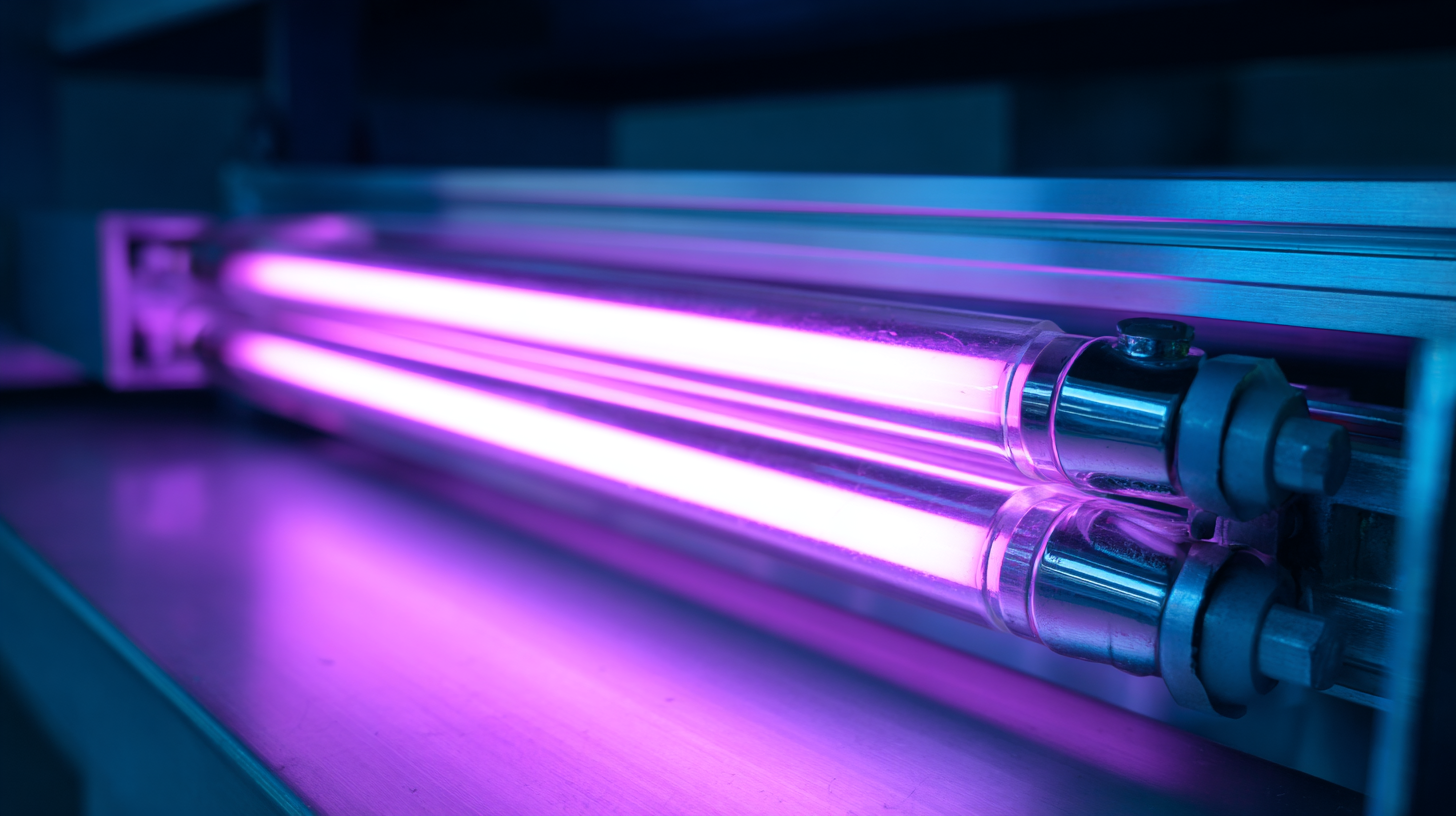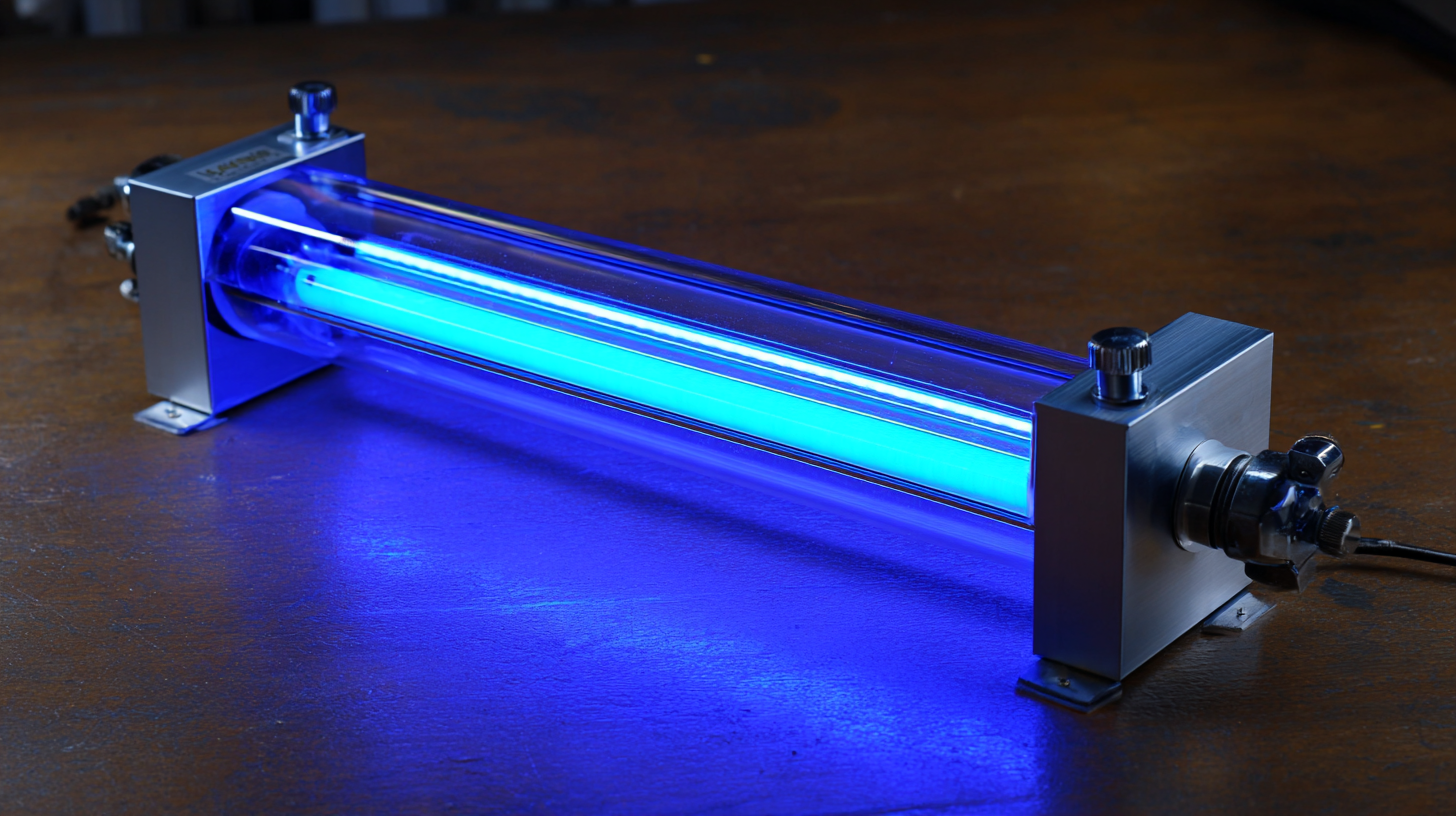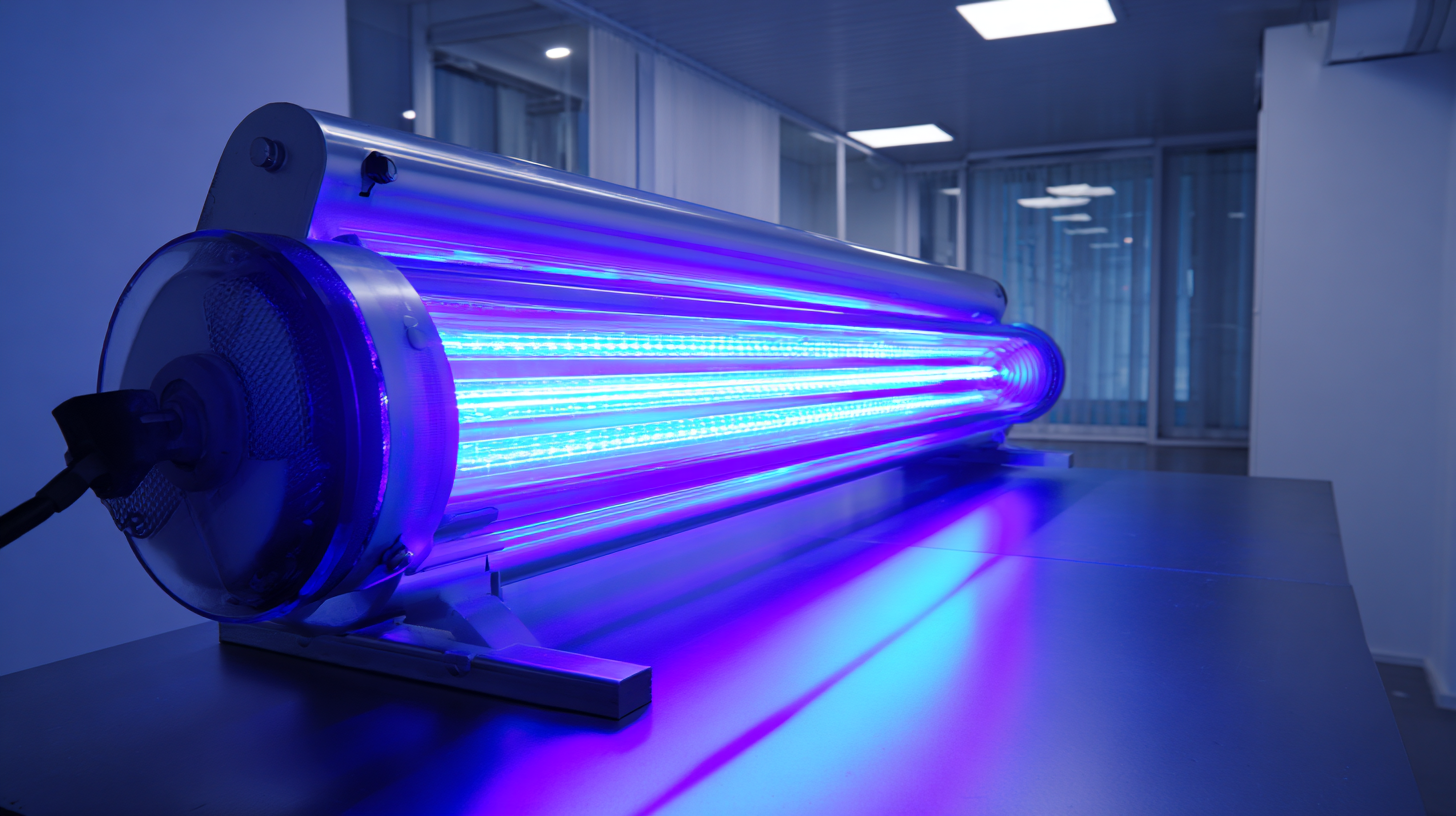Leave Your Message
-
Phone
-
E-mail
-
Whatsapp
In the rapidly evolving world of UV technology, selecting the right "UV Lamp High Power" for your business needs is a critical decision that can significantly impact operational efficiency and product quality. According to a recent industry report by MarketsandMarkets, the global UV lamp market is projected to grow from $2.69 billion in 2020 to $4.04 billion by 2025, driven by the increasing demand for UV disinfection and curing applications. As businesses seek to leverage the advantages of high-power UV lamps in various sectors, from manufacturing to healthcare, understanding the key characteristics and performance metrics becomes essential. This ultimate guide aims to equip you with a comprehensive checklist to navigate through the myriad options available, ensuring that your selection process is informed, strategic, and aligned with your specific operational requirements.

High power UV lamps are essential tools for various industries, including printing, coating, and disinfection. Understanding the key features of these lamps is crucial for selecting the right one for your business needs. One of the most significant features to consider is the wavelength of the UV light produced. Different applications require specific wavelengths: for instance, printers may need lamps emitting UV light in the 250-280 nm range for effective curing. The intensity and energy output of the lamp also play a vital role, as higher output can lead to faster processing times and better quality results.
Another important benefit of high power UV lamps is their energy efficiency. Unlike traditional drying methods, UV curing can drastically reduce energy consumption and production time. This efficiency can lead to lower operational costs and an increased output, making it a cost-effective investment for businesses. Additionally, UV lamps are known for their eco-friendliness since they minimize volatile organic compounds (VOCs) emitted during the curing process. Understanding these features and benefits can help businesses make informed choices that enhance productivity while supporting sustainable practices.
When assessing your business needs for a high power UV lamp, the first step is to clearly define the applications and processes that require UV light. Different industries utilize UV lamps for various purposes, such as curing inks and coatings in printing, disinfecting surfaces in healthcare, and enhancing chemical reactions in laboratories. Understanding the specific tasks your UV lamp will support helps narrow down the essential specifications, such as wavelength, intensity, and operational durability.

Moreover, consider the workspace and environmental factors that may influence your UV lamp selection. Evaluate the size of the area where the lamp will be used, and whether portable or fixed installations are more suitable. Additionally, take into account energy efficiency and cooling systems, especially if the lamp will be in continuous operation. Investing time in assessing these factors ensures that you select a UV lamp that not only meets your immediate business requirements but also aligns with future growth and technology advancements.
When it comes to selecting high power UV lamps, businesses often find themselves choosing between three main types: mercury, LED, and xenon. Mercury UV lamps have been widely used for their high-intensity output and broad spectrum, making them ideal for various industrial applications, including printing and curing. According to a recent industry report by ResearchAndMarkets, the global mercury lamp market is expected to grow at a CAGR of 5% through 2025, driven by their efficiency and availability.
LED UV lamps represent a modern alternative, offering advantages such as lower energy consumption and longer lifespans. Studies indicate that LED lamps can consume up to 80% less energy than traditional mercury lamps, making them an attractive option for businesses looking to reduce operational costs. Additionally, their instant-on capability and minimal heat output contribute to safer work environments. The LED UV market is projected to expand significantly, with a 25% annual growth rate anticipated through 2028, as indicated in the UV Resin Market Analysis report.
Xenon UV lamps, on the other hand, are recognized for their high-intensity bursts and short duration, often used in specialized applications like laboratory testing and certain high-speed printing processes. While they may not be as common as their mercury and LED counterparts, the demand for xenon lamps is expected to rise due to advancements in technology and increasing applications across different sectors. Ultimately, the choice between these lamp types will depend on specific business needs and operational priorities.
When investing in a high power UV lamp for your business, one of the foremost considerations should be energy efficiency. Energy-efficient UV lamps not only reduce electricity costs but also diminish your overall environmental impact. Look for lamps that offer high UV output with low energy input. This can often result in long-term savings, making the initial higher purchase price worthwhile.
Tips for energy efficiency: Consider using lamps with advanced technology, such as LED UV lamps, which consume less power and have a longer lifespan. Additionally, implementing smart controls can optimize energy use by allowing you to operate the lamps only when needed.
Cost evaluation goes beyond the initial purchase. Factor in maintenance, replacement parts, and operation expenses over the lamp’s lifespan. Create a budget that encompasses these elements for a true representation of the investment.
Tips for budgeting: Regularly review your energy bills and maintenance records to gauge your UV lamp's efficiency. This proactive approach can help identify unnecessary costs and inform future purchasing decisions. Be sure to explore different brands and models to find the perfect balance between upfront cost and long-term savings for your unique business needs.

When integrating high power UV lamps into your business, safety should be the top priority. Proper usage begins by ensuring all employees are adequately trained on the potential hazards associated with UV exposure. It is essential to provide personal protective equipment (PPE), such as goggles and gloves, to minimize risks during operation. Regular safety meetings can help reinforce safe practices and keep everyone informed about the safe handling of UV equipment.
Maintenance of UV lamps is equally crucial in promoting safety in the workplace. Regular inspection of lamps and associated equipment can prevent malfunctions that could lead to exposure incidents. Cleaning the equipment to remove any dust and contaminants ensures optimal performance and longevity, while also reducing the chance of harmful emissions. Furthermore, establishing a routine schedule for lamp replacement will guarantee that your UV systems operate at their highest efficiency without compromising employee safety. Adopting these practices will create a safer working environment while harnessing the benefits of UV technology.
